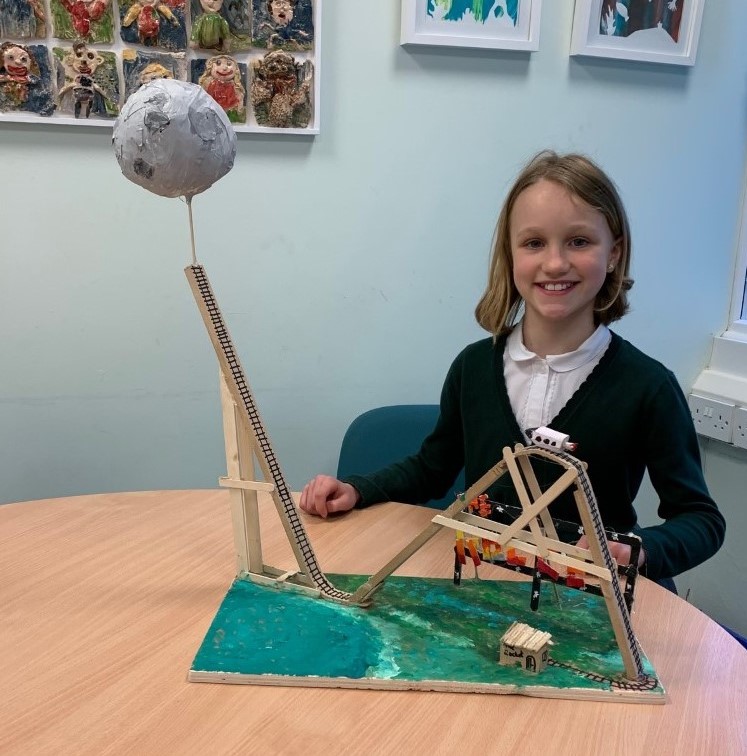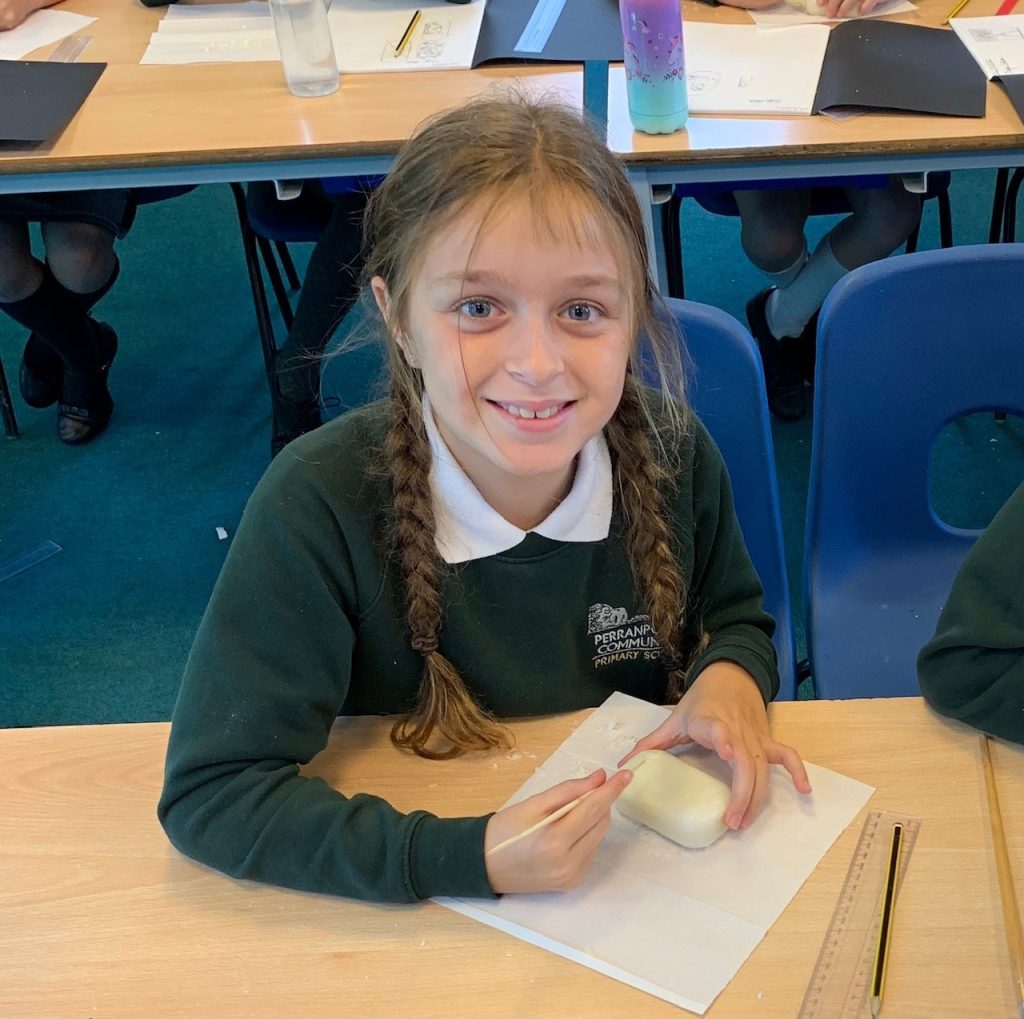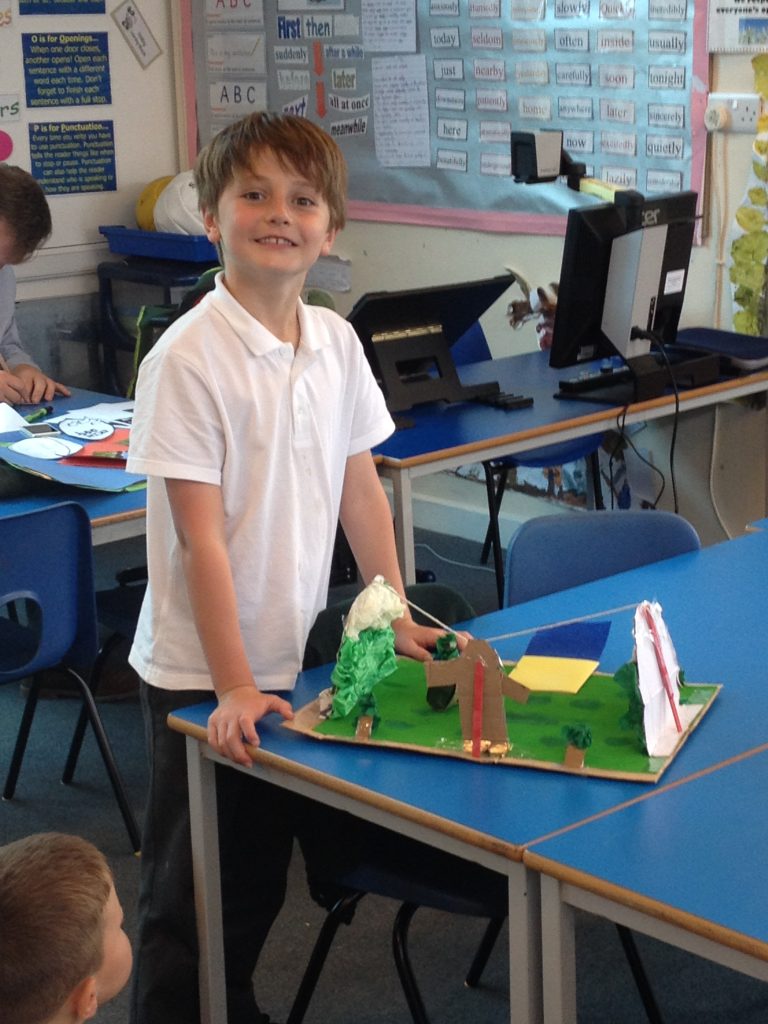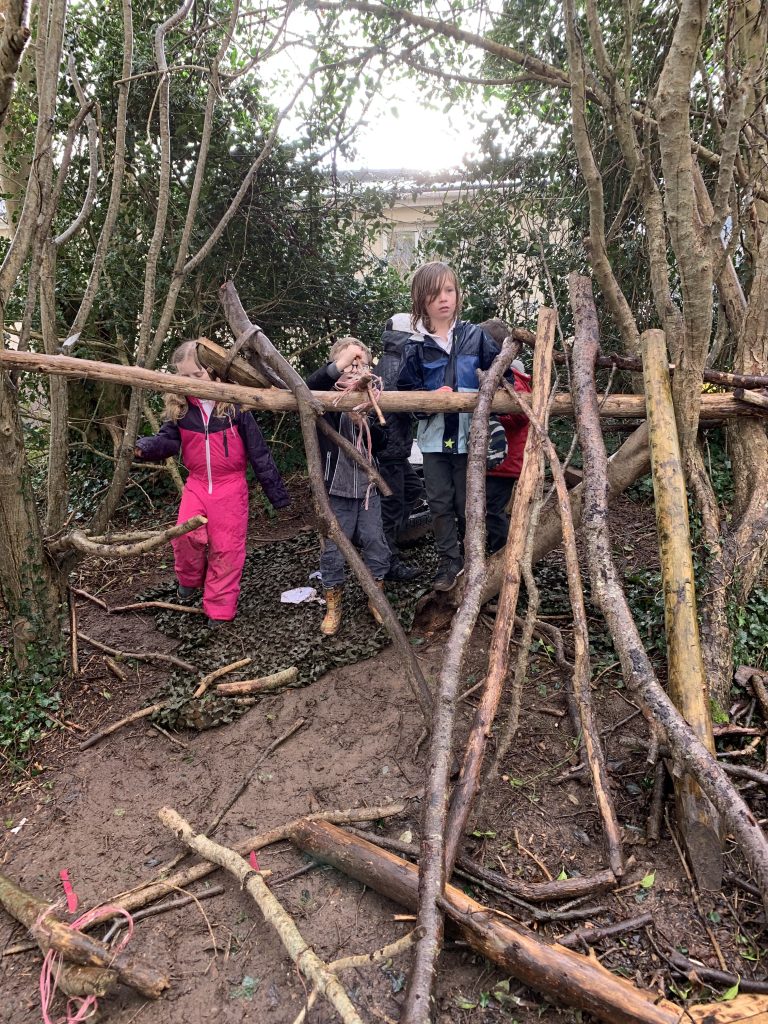Intent

Design and Technology is an inspiring and practical subject. Design and Technology encourages children to learn to think creatively to solve problems both as individuals and as members of a team. At Perranporth School, we encourage children to use their creativity and imagination, to develop design ideas that solve problems within a variety of contexts, considering their own and others’ needs, wants and values. We aim to, wherever possible, link learning to other areas of the curriculum such as mathematics, science, computing and art. The children are also given opportunities to explore and evaluate past and present design technology, its uses and its effectiveness and are encouraged to become innovators themselves
Implementation
Design
Through a variety of creative and practical activities, we teach the knowledge, understanding and skills needed to engage in a process of designing and making.
When designing and making, the children are taught to:

• Use research and develop ideas to build designs that are innovative, functional, appealing and fit for purpose.
• Generate, develop, model and communicate their ideas through discussion, annotated sketches or simple drawings, diagrams, and models.
Make
• Select from and use a wider range of tools and equipment to perform practical tasks for example, cutting, shaping, joining and finishing.
• Select from and use a range of materials and components, including construction materials, textiles and ingredients, according to their functional properties and aesthetic qualities
Evaluate
• Investigate and analyse a range of existing products
• Evaluate their ideas against their own design criteria and consider the views of others to improve their work
• Understand how key events and individuals in design and technology have helped shape the world
Technical knowledge
• Apply their understanding of how to strengthen, stiffen and reinforce more complex structures
• Understand and use mechanical systems in their products
• Understand and use electrical systems in their products
• Apply their understanding of computing to program, monitor and control their products
Cooking and Nutrition
• As part of their work with food, pupils will be taught how to cook and apply the principles of nutrition and healthy eating. Key knowledge and skills for D and T have been mapped across the school to ensure progression between year groups. This also ensures that there is a context for the children’s work; that they learn about real life structures and the purpose of specific examples, as well as developing their skills throughout the programme of study.
Impact

We ensure the children
· Develop the creative, technical and practical expertise needed to perform everyday tasks confidently and to participate successfully in an increasingly technological world
· Build and apply a repertoire of knowledge, understanding and skills in order to design and make high-quality prototypes and products for a wide range of users and critique, evaluate and test their ideas and products and the work of others
· Understand and apply the principles of nutrition and learn how to cook. Children will design and make a range of products. A good quality finish will be expected in all design and activities made appropriate to the age and ability of the child. Children learn how to take risks, becoming resourceful, innovative, enterprising and capable citizens. Through the evaluation of past and present design and technology, they develop a critical understanding of its impact on daily life and the wider world. High-quality design and technology education makes an essential contribution to the creativity, culture, wealth and well-being of the nation.
Teaching and Learning
Design and Technology will engage the children in a broad range of designing and making
activities which involve a variety of methods of communication; speaking, designing,
drawing, assembling, making, writing and using computer technology. Projects are taught in
blocks which allows for more effective learning in which teachers can focus on teaching and
developing DT skills, allowing children to develop their ideas and techniques. Units of work
have been selected and planned to ensure a balance of materials, skills, knowledge and
understanding throughout each Key Stage. Units of work are planned to include designing
and making assignments supported by focused practical tasks or skills teaching
and work involving reviewing existing products. All children should have a
breadth and balance of experience.
Assessment
Children’s skills will be assessed and developed by the teacher during lessons and through
critical discussion at the end of each unit. No formal assessment is recorded. Displays within
the classroom and hall areas will reflect a range of work across key stages, to celebrate and
exhibit the work of children, of all abilities.
Planning and Resources
On-line DT plans and resources, produced by the Design and Technology Association, are
available on the shared drive. Teachers also collaborate with their year group partners, to
design schemes of work to support specific bespoke projects. Teachers will either select
materials needed to complete a DT project from the DT Resource area, purchase any
materials needed for the design, construction and evaluation of a project or decide to use
recycled materials or junk modelling to help complete a project. Children are taught to use
tools and equipment in a sensible, safe and efficient manner.
Organisation
Design and Technology planning is mapped in blocks on the Whole School Curriculum
Overview. Units of work are planned to include a balance of designing and making
assignments, teaching key skills and work involving reviewing existing
products. Links with other subject areas may be made where appropriate.
EYFS
The staff team will plan for children to experience creative opportunities and develop key
skills and techniques within the EYFS curriculum. There will be a focus on developing fine
motor skills and learning how to plan, design and produce the finished project.
KS1 and KS2
Teachers will plan for lessons so that children will learn to design purposeful, functional,
appealing products for themselves and others based on design criteria and to communicate
their ideas through talking and drawing. They learn to select from and use a range of tools
and equipment to perform practical tasks and to choose from a wide range of materials and
components. They also learn to explore and evaluate their design and product.
Equal Opportunities
Whole school policy on equal opportunities will be adhered to in Design and Technology
activities. Teachers ensure that children have access to the range of Design and Technology
activities and use opportunities within Design and Technology to challenge stereotypes.
Children are encouraged and supported to develop their Design and Technology capability
using a range of materials. Children with special needs or disabilities will be differentiated for
and supported appropriately, to ensure development of skills and equal access to the Design
and Technology curriculum.
Inclusion
All children will be supported through differentiation, adaptation or adult support, to enable
equal access to learning in Design and Technology.

Role of the Subject Leader
The subject leader will monitor the teaching and learning of Design and Technology across the school; ensuring a high quality, broad and stimulating curriculum. They will also maintain a range of good-quality materials and tools, enabling teachers to resource and teach effectively.
Parents
We encourage all parents and carers to support and assist with whole school events and Design and Technology projects.
To find out more about Design and Technology click here or email Mr Johnson head@perranporth.tpacademytrust.org